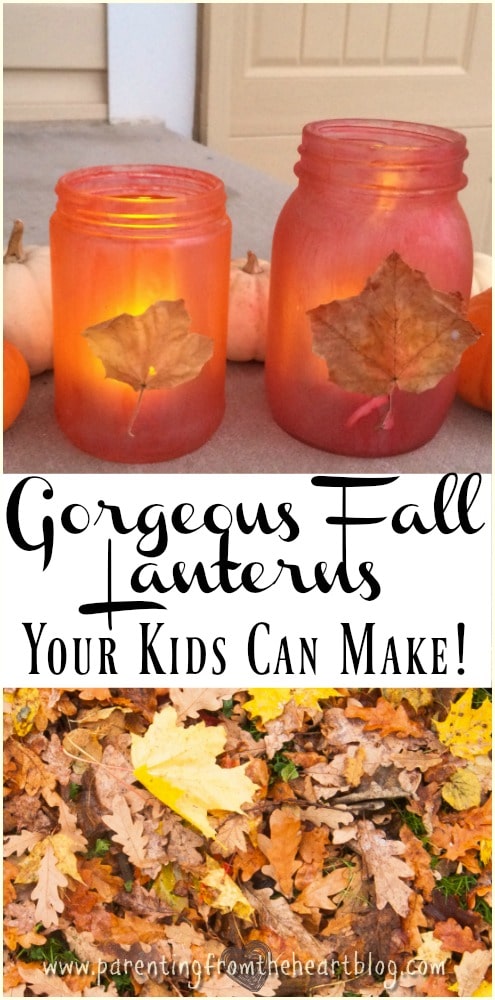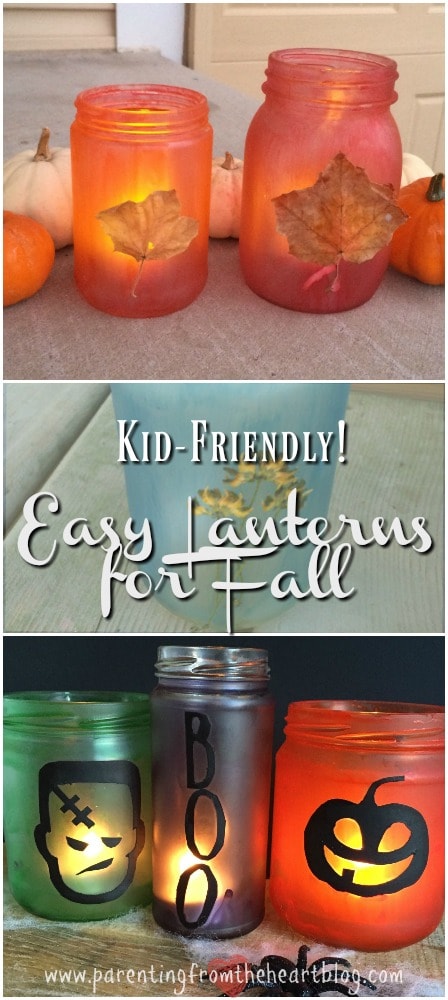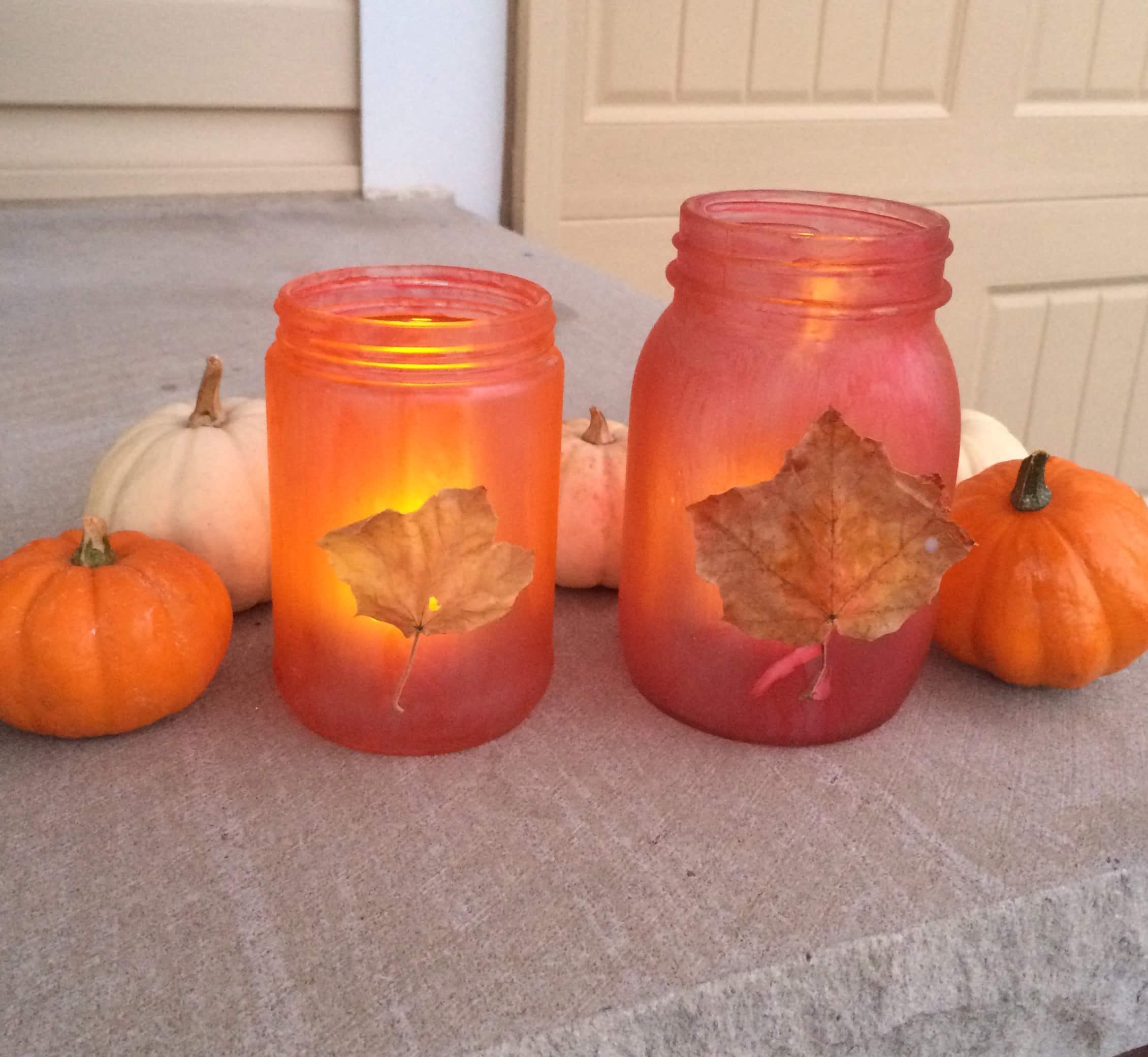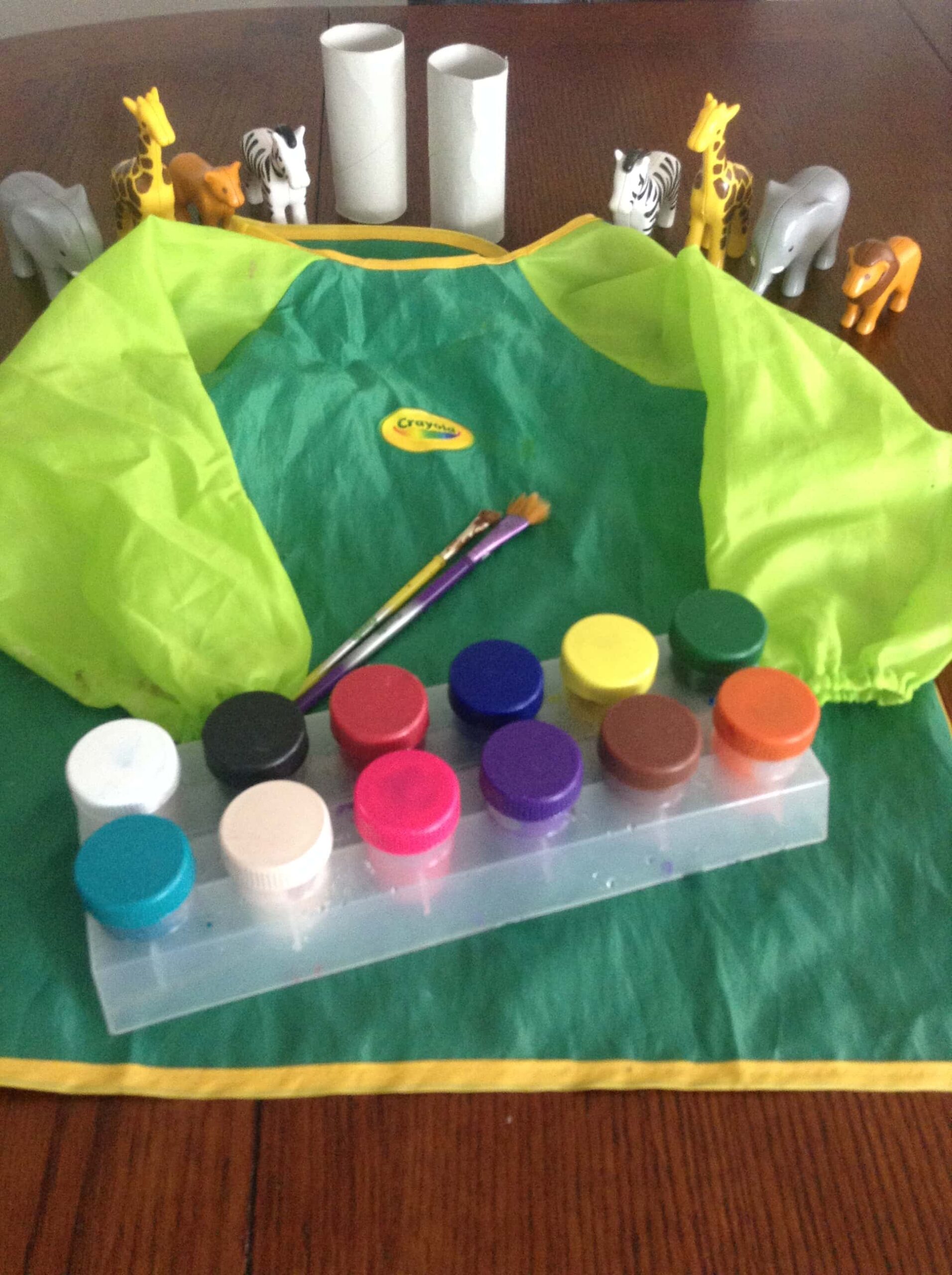There is something about Fall that gets me itching to craft. I collect gourds, pumpkins, dried leaves, pine cones, and excitedly make anything and everything my kids, Pinterest, or I may come up with. One of my first go-to’s is making these Fall Lanterns. Honestly, they’re SO easy to make and turn out beautifully. Not only that, my young kids can make these with next-to-no help. Plus, painting is great for their fine-motor skills and hand-eye coordination. Here are my easy Fall Lanterns using Mason jars!
Fall Lanterns Using Mason Jars
This post contains affiliate links for your convenience.

What you need
- Elmer’s glue
- Mason jars or glass jars stripped of their labels (lids removed)
- Flameless tea lights
- Food colouring
- Paint brush
- Dried leaves, flowers, or stickers
What you do
Take roughly a tablespoon of Elmer’s glue and it mix with a couple of drops of red and yellow food colouring. Once you’ve reached your desired colour, paint the jars completely all over. Once the paint has dried, use a small dab of glue to affix your embellishment whether it be a leaf, flower, or similar. Let dry and then set a flameless candle inside.
NB – If you would like your lanterns to be waterproof, you must spray them with varnish or lacquer before setting outside. To do so, go into a well-vented area away from children, follow the instructions on the can and let completely dry.
Make your Fall Lanterns more festive for Halloween by following these tips from Twitchetts!

If you try these out, be sure to tag me, @ParentfromHeart on Twitter or Instagram!











These are so cute! I love crafts that the kids can really do mostly on their own. Pinned! 🙂
Thanks so much for reading and pinning ❤️?
These fall lanterns for kids are so fun (and so are those Halloween lanterns)! We have no fall leaves here yet, but we will definitely be adding these to our crafting.
Thanks for the great kid’s activity!
Thanks for reading! They are great fall crafts. I’m still waiting for the leaves to fall here (image is from last year). Hope you enjoy! xo